14 Common Mistakes To Avoid When Making A Charcuterie Board
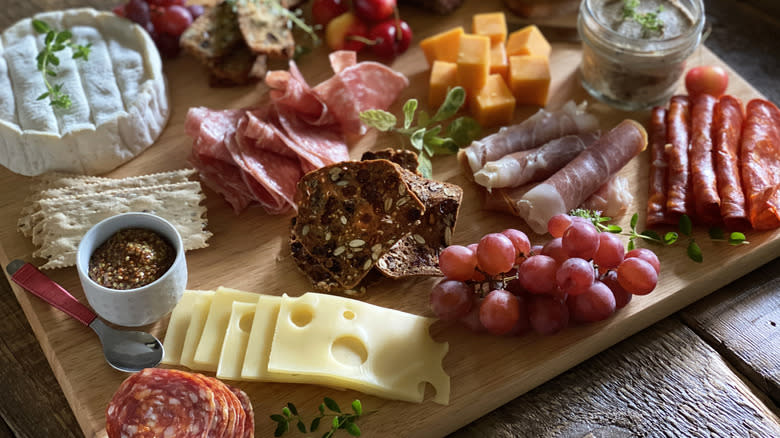
Not many things bring people together as well as a good charcuterie board. The sociable style of serving finger food has its roots in French food cuisine, as you might be able to guess by its name, with "charcuterie" loosely translating to "cold meats." The practice of charcuterie, which involved the preserving and selling of cured, cooked meat, began in 15th-century France, and the practice of serving it on a large platter as an appetizer has been a common method of food sharing for some time.
In recent years, however, charcuterie boards have reached almost dizzyingly ambitious heights. No longer just for serving meat, these platters can now incorporate a huge range of cheeses, fruits, nuts, and dips, and you'll also find more specifically themed boards that correspond with a certain food culture or dietary requirement. While this sounds like charcuterie boards have gotten looser, and therefore easier to get right, however, you'd be disappointed. There are a few key rules to follow with charcuterie boards to ensure consistency, quality, and deliciousness -- and a few crucial mistakes that nearly everyone makes, which could be affecting your appetizer (and your guests' enjoyment) way more than you thought. ?
Read more: French Cooking Tricks You Need In Your Life
Using The Wrong Board
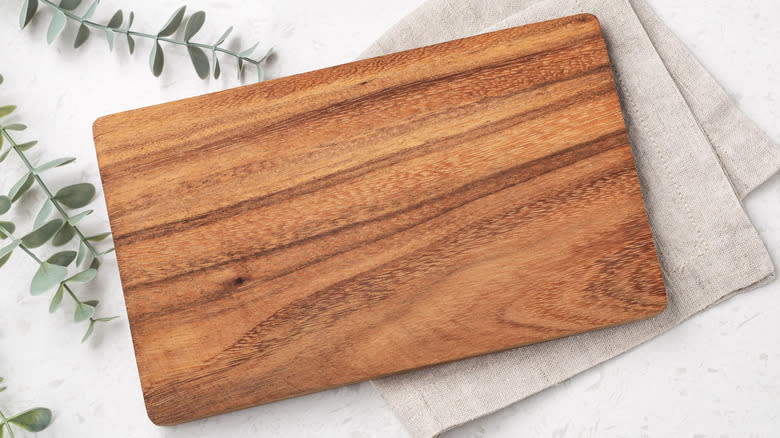
All charcuterie boards start with the board itself, and too many people assume that any old cutting board will do. While this is technically true, picking the wrong board can set you off on the wrong foot and stop your platter from having the right visual effect. Ideally, charcuterie should be served on a sturdy wooden board with a dense wood grain, which gives the right sturdiness for the abundance of food you're placing on it. Opting for a wooden board gives your charcuterie platter an all-important, rustic feel, and the unassuming, warm color of wood allows the colorful items on the board to pop. Mango wood is a particularly good option for charcuterie boards, thanks to its compactness and appealing look.
You should also consider the size of your board, relative to the amount of people that you're entertaining. If you only have a few guests over, using a board that's too big will either swamp the food you're putting on it, making you look ungenerous, or you'll feel tempted to fill the whole thing, ruining your friends' appetites. Ideally, you should use a relatively new board to serve your charcuterie on, and not one that's been around for a while, and therefore covered in knife marks or emanating food smells. ?
Only Using One Type Of Cheese

While charcuterie boards are traditionally made up of cured meats, they have evolved far beyond that, and most of them nowadays contain some form of cheese. A massive mistake that people make, however, is to only include one type. This is a seriously missed opportunity to round out your charcuterie board and offer selection to your guests, as well as to create exciting flavor contrasts among your selection.
So, stock up on your cheese before building your board. "A well-rounded board offers three or four cheeses, in a variety of textures. Think hard and creamy," executive chef for Eataly Las Vegas Matthew Chacho, tells Mashed. If you're including a relatively soft cheese like a taleggio, for example, Chacho recommends contrasting that with a hard Parmigiano Reggiano and an ultra-creamy ricotta. If you're opting for a classic sharp cheddar, try including something softer and creamier, like a mozzarella. Make sure that you have something for everyone, and perhaps most importantly, give each cheese space on the board. Folks who aren't fans of strong-tasting goat or blue cheese, for example, won't appreciate it if the mild cheddar you put out for them is nudging against the stronger cheese.
Using Too Little Food For Your Guests

Charcuterie boards are the perfect tool for keeping your ravenous guests distracted and out of the kitchen while you're cooking. Use too little food, however, and your mission to do this will be unsuccessful. It's pretty easy to underestimate the amount of food each person needs for a charcuterie board to feel substantial and appetizing, without it becoming overwhelming. The best way to nail it is to get technical and bust out your scales.
For an appetizer charcuterie board, you should aim for around 2 ounces of cured meat per person, and 2-3 ounces of cheese. Around this, you should then aim to include a good selection of fruits, crackers, breads, and dips. Your meat and your cheese are the richest ingredients by far, and so you don't want to supply too much, as this will just fill people up. If you're aiming for a larger charcuterie board, or one which is designed to be a light meal all in itself, you should add a few extra ounces of meat and cheese and go bigger on the accompanying ingredients. To avoid any issues, it's always a good idea to buy more food than you might think you need, so that you can top up the board if you find it's disappearing too quickly.
Forgetting To Vary Your Textures
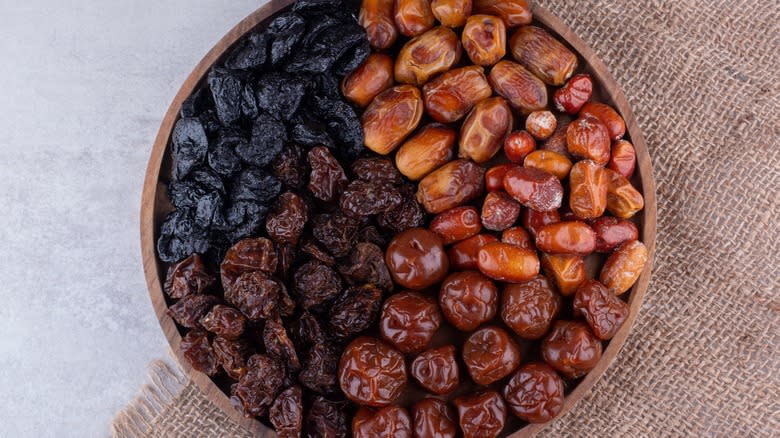
Contrast shouldn't just extend to your flavors, either. A variety of textures is something that too many people overlook when making a charcuterie board, and it doesn't help that many of the classic items, like cheese, meat, and fruit, are often soft and chewy. As a result, they end up with a platter of food that's unrelentingly squishy.
Rather than have this happen, build a board that seeks to incorporate at least four different textures. Remember that there are more textures than just soft and crunchy. Creamy and oily textures, which you can achieve through dips or sauces, can provide important moisture. Gooey textures, from ultra-soft cheeses or fruits like figs or dates, give a lusciousness that other foods won't provide. Additionally, keep alert to the fact that there are varying degrees of each texture. For example, you might wish to include a few different types of crackers that differ in water content, with the driest giving a sharp crispness, and the moistest providing a soft, gentle, crumby crunch.
Not Considering Your Pairings

The concept of pairing takes full flight with charcuterie boards, and it's something that a lot of people forget about. The idea is that the food elements on your board should be paired with each other, to provide maximum flavor, textural contrast, and cohesion. The effect of doing this is to create a sense of balance on the board and ensure that some of your food items don't seem random, which can leave your charcuterie platter feeling slightly chaotic.
Luckily, pairing is a bit simpler than you might think, and a big part of it is thinking about the region that your food comes from. For example, opting for an Italian-inspired board might see you pair a sharp, salty prosciutto with a mild, creamy mozzarella, which can then be cut through by tangy marinated red peppers. Spicy Spanish sobrasada, similarly, pairs excellently with a gentle-tasting tetilla or a slightly nutty manchego cheese. You should also think about the drinks you'll be serving your charcuterie board with, and how their flavor profiles might pair with the foods on display. Heavy red wines, for example, are unlikely to pair well with vegetarian charcuterie boards that emphasize light, fresh flavors.
Including The Wrong Types Of Vegetables
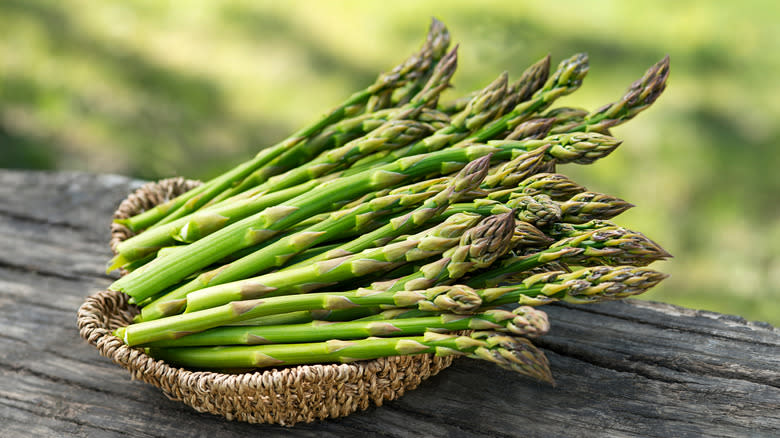
It's important to include some fresh elements on a charcuterie board, to stop the whole thing from becoming heavy, and offer some variety. However, a charcuterie board is not a crudité plate, and trying to combine the two with the inclusion of certain vegetables can leave your appetizer pretty unappetizing. This is largely because charcuterie boards are designed to be paired with wine, and there are some vegetables out there that will clash enormously.
Artichokes are a surprising example. "The organic acid in artichoke can make wine taste strange, sweet or even metallic," explains Britny Maureze, chef for Sequoia Grove Winery. This isn't true of all wines or all artichoke preparations -- some dry wines can go well with roasted or char-grilled artichokes -- but it can be a difficult balance to strike. Sulfurous vegetables like asparagus or broccoli, which can either be served fresh on charcuterie boards or grilled, can also clash with wine. The sulfur in these cruciferous vegetables can make the wine taste acrid and somewhat dirty and reduce a good wine made with solid practices into something pretty gross. If you do want to include vegetables, root varieties like carrots are usually a good option, as they pair well with wine and have a solid, crunchy texture. ?
Thinking That Color Isn't Important
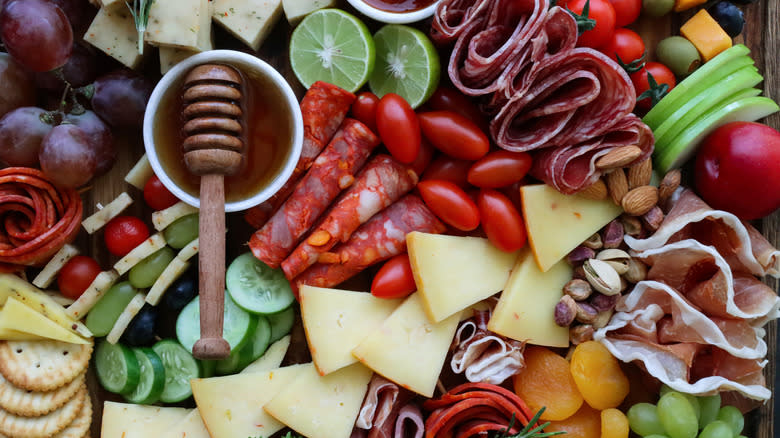
One of the most underrated aspects of a charcuterie board is color, and it can make a surprising impact on your friends' enjoyment of your food. Color is a vital component in food because it not only makes things more visually interesting, but a variety of different shades evokes a sense of health and nutritional value. Naturally occurring colors in food, particularly in fruits and vegetables, indicate the presence of various phytonutrients that may have positive health benefits according to the University College of Osteopathy.
Including these colorful elements on your charcuterie board, therefore, is a way to make your platter feel much healthier and brighter and cut through the beige shades that can sometimes dominate. This is easily achieved by scattering some fruit across your board. Try using red or purple grapes, cubes of watermelon, or blueberries to give your board some deep visual tones. Slicing open your fruit is also a good way to get even more color, as the inside can often feel (and look) especially fresh and vibrant. However, try and avoid using fruit that will lose its vibrancy once it's cut into, like apples, which will turn brown from oxidation. ?
Forgetting To Theme Your Board
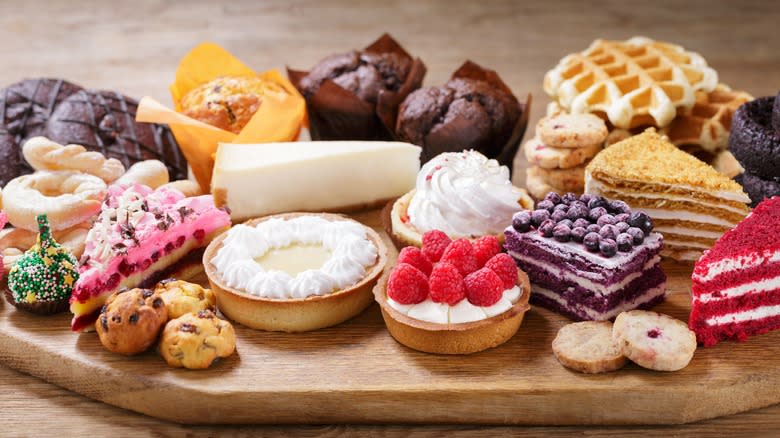
One of the main things that can ruin a charcuterie board is a lack of theme. Not all charcuterie boards need a specific angle to be delicious, and many of them can be made up of whatever you have in your fridge. However, by not using a theme, you run the risk of making a board that is comprised of foods from loads of different geographical areas, and which may not go together.
As well as this, you miss out on a crucial sense of fun, excitement, and innovation by avoiding a theme, which goes a long way with a charcuterie board. Going for holiday or brunch themes, for example, with the latter perhaps being achieved by filling your board with cooked bacon, sliced eggs, avocado, and bagels, allows you to serve up something completely different than the classic selection of meats and cheeses. You can also theme your charcuterie board geographically, opting for choices like a Greek-inspired platter made up of feta, olives, slices of red onion, kavourmas, and pomegranate seeds. For a unique take on charcuterie, try making a dessert-themed board, loading it with chocolate, marshmallows, and sliced strawberries, and serving it at the end of your meal.
Only Using Savory Elements
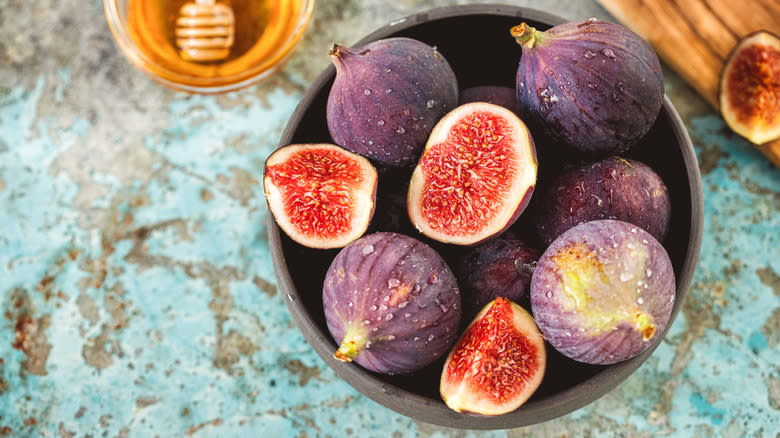
The central components of a traditional charcuterie board are meat and cheese, and as such, things can get pretty savory with this appetizer. However, it's important to provide contrast. Sweetness serves to balance out the flavors in charcuterie and elevate the primary savory notes. It also helps to offer a respite for your guests from the abundance of umami and cleanse their palates before they dive into a different cheese.
Fruit is the most common choice for sweetness on a charcuterie board and provides freshness, although you can also use additions like jams, jellies, honey, or even chocolate. If you're using fruit, though, it's useful to recognize that they come in different degrees of sweetness and sourness, and you should aim for a variety that covers several bases. Try placing the slightly sour sweetness of sliced strawberries or whole raspberries next to the gentler, more sugary notes of figs and dates. Stay aware of the fact that certain fruits, like apples, will change color quickly when they're sliced due to oxidation, so try to make them the last element you add to your board before serving. If you wish, you can also use dried or dehydrated fruits, although they may not have the same juiciness as their fresh counterparts. ?
Serving Your Cheese Straight From The Fridge

If you're making your charcuterie board in advance (which is a real timesaver), it's natural to want to leave it in the fridge until just before you serve it. Leaving certain items on the board while it's in there, though, will diminish and dull their flavor. This is the case with cheese, which is often served fresh out of the fridge despite being way better at room temperature. Cheese is necessarily high in fat, and when it's cold that fat becomes tighter, limiting its natural flavor and making the cheese harder in texture. When it's at room temperature, it softens, allowing its scent to release and improving its taste.
As such, you should always give your cheese time to warm up before adding it to your board. You can do this in a few ways. If you have items you'd prefer to keep cold on your charcuterie platter, take your cheese out of the fridge, bring it up to temperature, and add it once you pull the board out. By far the easiest thing to do, though, is to simply allow the whole board to come up to room temperature, with your sliced cheese on it, before taking it to the table. Other food items, like sliced meat, is usually more flavorful when warmer, and fruit that's too cold can put your teeth on edge.
Forgetting About Cutlery

Because charcuterie boards are a communal food item, they encourage people to get stuck in all at once, usually with their fingers. However, forcing people's hands (quite literally) may not be the ideal move. For some people, this can feel like an unsanitary activity, and they may not want to eat something that's been touched by another person. In addition, once they've picked up the food, they're going to need somewhere to place it -- and you'll need something to protect your table.
That's why you should always include cutlery with a charcuterie board. Ensure that you have enough small plates to go around, and a selection of both serving cutlery and personal cutlery for people to eat with. Be sure to grab some specialized cutlery, too, for certain food items like cheese. Pronged cheese knives allow people to slice the food and pick it up with one flick of the wrist, whereas parmesan knives are sharp enough to skim off chunks of the hard cheese. Using cheese knives also hopefully prevents your guests from contaminating any of the other food items on the board with smears of dairy, potentially ruining their taste and appearance.
Not Accounting For Your Guests' Needs

Charcuterie boards are the ultimate sharing item, but some of your guests may have a bit more trouble sharing than others. Failing to check on any dietary requirements, and to accommodate them with your board, is a huge mistake. This is most noticeable -- and most dangerous -- when it comes to allergies and any allergenic food items like nuts or dairy, and it may not be a problem with just the food. "Confirm if guests have any allergies. Nothing is worse than using a tree nut board (like walnut) only to find out a guest is allergic," explains executive chef Matthew Chacho to Mashed. Ensure you're always checking all your food items for any traces of allergens, too, even those that might not seem problematic.
You should also make as many adjustments as possible for folks who follow a plant-based diet. Luckily, there are plenty of options out there for vegan meats and cheeses, and you can also add vegan dips and spreads to your board. When doing this, though, just make sure that you're keeping them separate from meat-containing products, if served on the same board. Additionally, you should always make your guests aware of which items are vegan and which aren't, to avoid any confusion.
Just Including One Form Of Meat

Meat will likely be one of the priciest items on your charcuterie board, so it makes sense to try and keep an eye on your expenditure. Only including one type, however, is an error that too many people make -- and it leads to a boring board. The art of charcuterie, after all, is concerned with cured meats primarily, and if you reduce that too much, you end up with a cheese board with a little bit of ham on it.
It's also important to remember that different types of meats vary enormously in flavor and pair with cheese or fruits in distinct, exciting ways. If you can, aim for between three to five different types of meat on your charcuterie board. It's a good idea to aim for a few types that people are familiar with, like prosciutto and salami, alongside some more interesting, out-there options that contrast in flavor and texture. Try including spicy fermented 'nduja sausage for a burst of spice and a soft, almost creamy texture. For a slightly milder, mellower flavor, go for mortadella. If you know you have guests that find spice difficult, there's nothing with including a regular sliced ham.
Skipping The Accompaniments
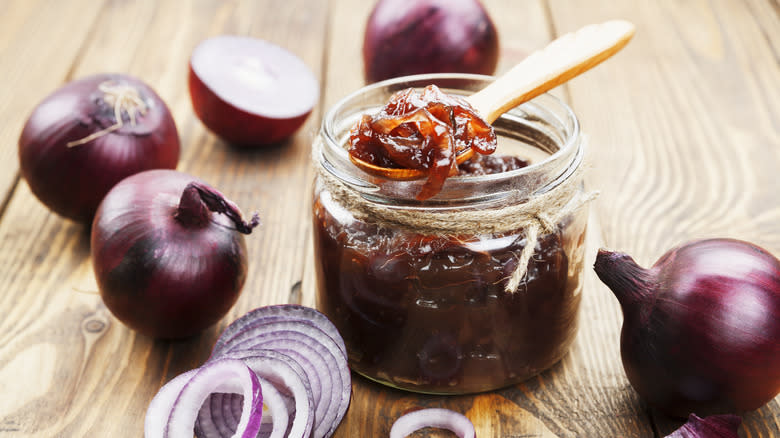
Charcuterie boards are hardly lacking in flavor, but one thing they do suffer from sometimes is a lack of moisture. Between the abundance of meat, cheese, and crackers on display, charcuterie boards are often just way too dry and need something to offset it. This is where accompaniments come in. Adding a couple of dishes of sauces or dips dotted around the board, or around the table you're eating at, all allow your guests to spoon at will and lubricate their food.
Items like spicy chutneys are a great option to go with cheese, whereas a balsamic glaze or chimichurri dip will work perfectly with spicy meat. You can also include things like olive oil-infused hummus or creamy tzatziki. Accompaniments that provide moisture don't just come in the form of dips, too. Items like olives and pickles, as well as juicy fruit like grapes, can provide a burst of liquid in a fairly dry, mealy landscape. Other types of marinated vegetables, like artichokes or red peppers, can also give the board moisture, as well as color.
Static Media owns and operates Daily Meal and Mashed.
Read the original article on Daily Meal.